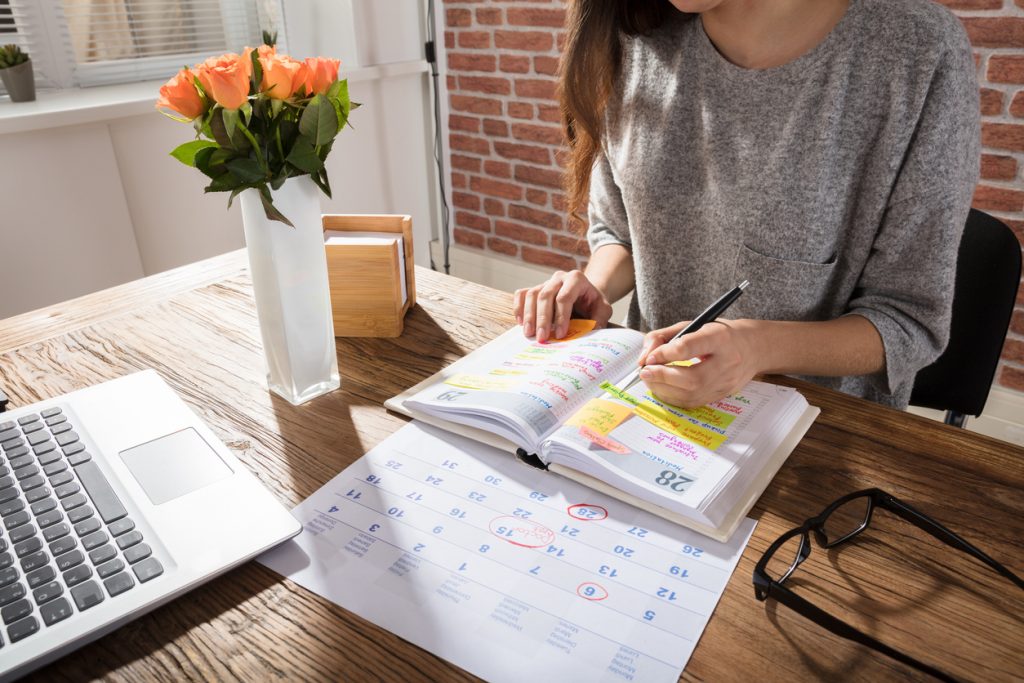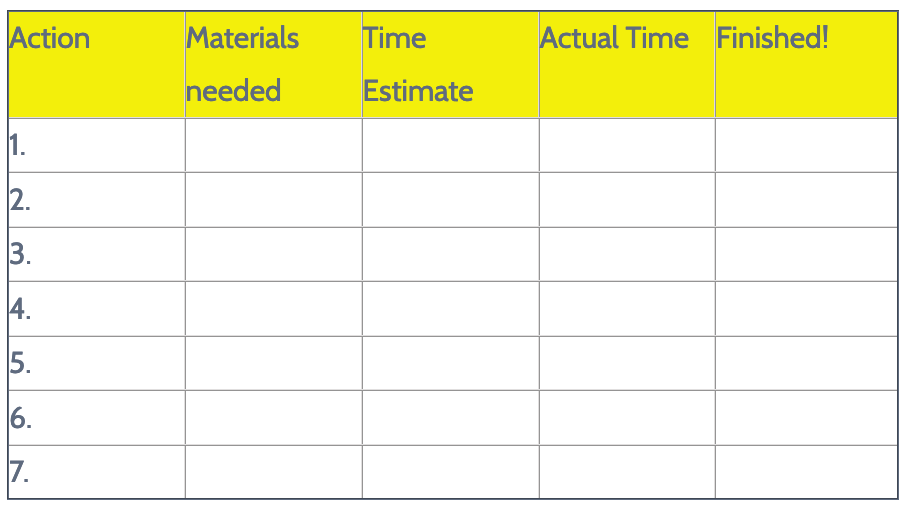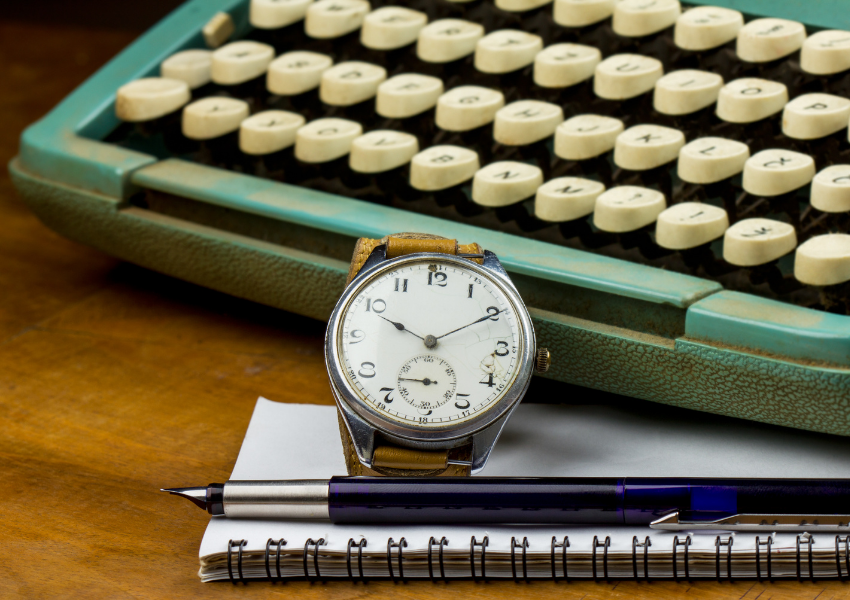Personal Project Planners for ADHD Minds: Start managing tasks, time and ideas with this creative tool!
 Projects can be difficult. Whether you’re putting off a project, or just slugging through each part of it over the course of what seems like months, a new undertaking can really drain you. No matter how small a project, or how large a task, we have all experienced anxiety around completing something, especially if we or a loved one have ADHD. Fortunately, personal project planners can really help to diminish the overwhelm. The goal of using any planner is to provide structure for planning, prioritizing, and sequencing aspects of executive functioning skills. These are the processes that get you from the beginning to the end of a task. Different types of forms or personal project planners can make a task feel manageable. Here is why.
Projects can be difficult. Whether you’re putting off a project, or just slugging through each part of it over the course of what seems like months, a new undertaking can really drain you. No matter how small a project, or how large a task, we have all experienced anxiety around completing something, especially if we or a loved one have ADHD. Fortunately, personal project planners can really help to diminish the overwhelm. The goal of using any planner is to provide structure for planning, prioritizing, and sequencing aspects of executive functioning skills. These are the processes that get you from the beginning to the end of a task. Different types of forms or personal project planners can make a task feel manageable. Here is why.
Beginning tasks can feel impossible, but creative planners can make them fun!
Starting a new task is challenging for everyone on some level. Whether it feels unpleasant or potentially problematic plays a huge role in the amount of energy a task requires. Simple tasks often feel impossible to people with ADHD. Creating steps to move it along, and then completing them can be challenging for people with executive functioning deficits. Having a formula for success can be important, and a personal project planner can do that. While spontaneity is important (and fun) from time to time, it is important to maintain a routine to set expectations and build good habits. This is important for tasks too. Routines offer organization and predictability to kids with ADHD. They comfort them, even if it sometimes seems counter-intuitive. Different designs might spark creativity in some minds, a simple design might feel less chaotic.
Switching from one task to another can be less daunting with personal project planners.
 Kids and adults with ADHD often get overwhelmed when they’re asked to stop one activity and start another. Shifting from one task to another involves executive functioning skills – such as impulse control, cognitive flexibility and organization -that might not come naturally to them. Knowing how to wrap up where they are in a project, remembering where they’re leaving off so they know how to begin again when it’s time to return, and moving onto something new can be incredibly challenging. Having a planner handy to write down tasks, notes and times can help you keep track of where you are and what’s next.
Kids and adults with ADHD often get overwhelmed when they’re asked to stop one activity and start another. Shifting from one task to another involves executive functioning skills – such as impulse control, cognitive flexibility and organization -that might not come naturally to them. Knowing how to wrap up where they are in a project, remembering where they’re leaving off so they know how to begin again when it’s time to return, and moving onto something new can be incredibly challenging. Having a planner handy to write down tasks, notes and times can help you keep track of where you are and what’s next.
Hyperfocus can make tasks more difficult, especially without a schedule.
Many people with ADHD experience hyperfocus, and it can be a very helpful trait for learning, creativity and productivity. It can, however, be detrimental in certain circumstances. While hyperfocusing on a project or activity can lead to great results, it can also make achieving tasks even tougher because of a lack of awareness of how time passes. Think about how time goes fast when you’re having fun, but at a higher level. No matter how many warnings your parent might give, having to stop a computer game or playing hoops with your neighbor to do chores can still come as a shock. Even stopping a task to start another one you think is fun can take time to process. Having a planner to work with can give the mind an easy outline of the tasks ahead. In addition, it offers space to journal out anything that might help you transition into a new thought pattern.
Personal project planners make tasks easier to understand.
 Many people with ADHD are visual learners, and learning quirks will happen. Even if the task has been explained thoroughly, and in a way that the person understands, there is often worry and other, perhaps more compulsive, thoughts that can overshadow understanding. Often, scenarios and projects are not explained clearly either. Sometimes all it takes is a quick YouTube tutorial searched online to help you clarify. However, personal project planners give you a space to write notes about the task or draw photos in a way that everyone can understand. No matter what, make sure to engage with the material in a way that suits your particular situation.
Many people with ADHD are visual learners, and learning quirks will happen. Even if the task has been explained thoroughly, and in a way that the person understands, there is often worry and other, perhaps more compulsive, thoughts that can overshadow understanding. Often, scenarios and projects are not explained clearly either. Sometimes all it takes is a quick YouTube tutorial searched online to help you clarify. However, personal project planners give you a space to write notes about the task or draw photos in a way that everyone can understand. No matter what, make sure to engage with the material in a way that suits your particular situation.
Create your own personal project planner
Whether you choose to devote yourself to a working spreadsheet on the computer, your tasking is available in an app, or you invest in paper planners, there is an option for everyone who’s interested. (Isn’t it great that they make to-do lists and project planners specific to tasks in addition to scheduling planners? And that they’re available at almost every retail shop around?) Here is how you can create your own forms that suit your and/or your child’s specific management skills. This will require some – perhaps difficult – effort in the beginning, but it will definitely yield results. My favorite method is a simple but effective form I have used over the years:
1. Gather a pen and a journal or a piece of paper.
2. Choose the topic or task and write that on the top of the paper.
3. Make a grid with 3 vertical columns and several horizontal rows. Label the three columns “Possibilities, Pros, Cons.”
It should look like this:

4. Put any ideas about the project in the possibilities column. Follow this with what you consider good and/or bad about that idea.
For example, if the task is organizing items in the basement, the possibilities list might range from “taking everything to the dump” to “getting rid of anything that I haven’t used in 5 years.”
5. Create the sequential steps needed to accomplish the task using another grid. This grid will have 5 vertical columns and several horizontal rows. Use the labels suggested below, OR create your own!
Make as many numbered rows as required to finish the project, and make the actions as specific as possible. Estimate the time it takes to do a step and then compare that guess with the time that passes. This will help to improve those all-important time management skills as well!

Keep in mind, some people might prefer to have a “Notes” column or journaling area, so that they can work through emotions. This can help them to perhaps explain what they loved or didn’t love about communication around the task and what they had to do. This can help everyone stay informed for the next time an opportunity like this comes up! Many kids and adults with ADHD struggle with maintaining structure and practice of task management. However, I have found that my clients ultimately embrace organization tools like personal project planners. Many find them extremely helpful! These “roadmaps” reduce anxiety, clarify goals and build confidence as activities are completed. 
Read more blog posts:
- Feeling overwhelmed by something? Break it down!
- ADHD and Motivation: How stress reduces productivity and what you can do about it
- 5 Tips to Uplevel Your Spring Cleaning and Decluttering
Watch on Dr. Sharon Saline’s YouTube Channel:
- Initiating and Completing Tasks with ADHD (ADDitude Mag ADHD Q&A with Psychologist Dr. Sharon Saline)
- Planning and Prioritizing with ADHD (ADDitude Mag ADHD Q&A with Dr. Sharon Saline)
- 4 Tips to Boost Motivation in Kids and Teens (WWLP 22 News Mass Appeal Interview with Dr. Sharon Saline)
Deeper Dive: https://drsharonsaline.com/product/motivation/ https://drsharonsaline.com/product/home-seminar/
